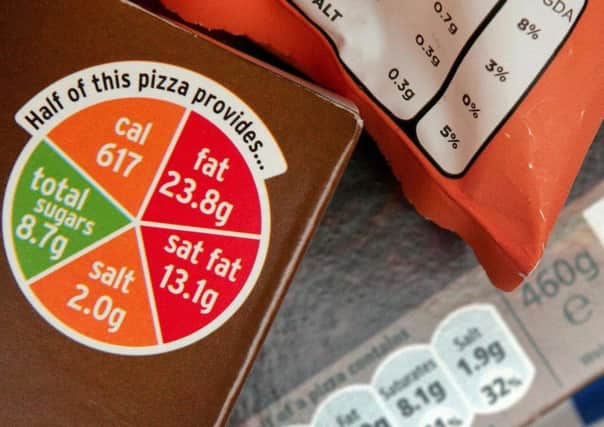Stephen Jardine: Activity labelling is an exercise worth trying


For a small pot of yoghurt, it packs a bumper load of nutritional information. The label lists the salt, calcium and protein levels and the all-important deal breaker, calories. In this case, 459kJ/109kcal per 100g.
Just one problem. I have absolutely no idea what that means or what 100g of yoghurt even looks like.
Advertisement
Hide AdAdvertisement
Hide AdLabelling has been a long-term problem for the British food industry. The current nutritional information was introduced 20 years ago but few believe the current system works.
Research for the Royal Society for Public Health shows 44 per cent of people say they find food labels confusing. With the average consumer only looking at food for six seconds before buying, that is a problem. Labels may provide the strict nutritional science but they do not encourage behavioural change.
According to the RSPH, the answer lies with activity-equivalent labelling. Instead of bamboozling me with calorie energy information, the yoghurt manufacturer would instead tell me that eating a pot would require 10 minutes of jogging, 16 minutes of cycling or seven minutes of swimming to burn off the calories.
When the idea was tested, more than half of those questioned said it would make them eat less, exercise more or choose healthier products.
That is good news in a country where two thirds of adults are now overweight but it should come with a health warning.
There is no quick fix for our obesity problem. Eating less and exercising more is part of the answer but we also need to look at how food is sold and what it contains. The risk with activity-equivalent labelling is that it lulls people into a false sense of security and the belief that they can simply exercise away a poor diet.
There is also the issue of the way different calories have a varying metabolic effect and the fact that a 20-minute run for a fit young person is a very different proposition to the same exercise for an overweight middle-aged man with health problems.
Advertisement
Hide AdAdvertisement
Hide AdAll that said, there is something very attractive about the simplicity of the idea and it’s positive message. We are forever being told to stop eating or drinking things. In contrast, the activity equivalent labelling proposal urges us to start doing something by getting up and exercising.
The knowledge that a bag of crisps requires 19 minutes of jogging to burn off the calories would put some people off buying but others might just increase the exercise they do to deal with it.
As a nation, we need to exercise more. It’s not just about achieving weight loss. Research shows physical activity reduces stress and depression and improves sleep quality and self esteem.
In research by Populus, respondents said they were three times more likely to take exercise after reading activity-equivalent labels. That alone should be the spark for a fundamental review of labelling in this country.
Activity-equivalent labelling is not the whole answer but it could be part of the solution to our obesity problem. The government needs to consider stripping out the scientific detail and making space for traffic lights and stick men jogging, walking and cycling to help us help ourselves.